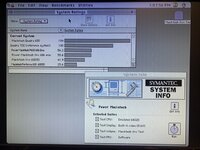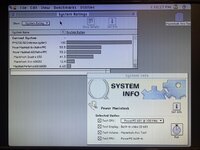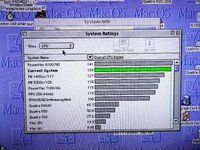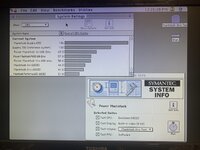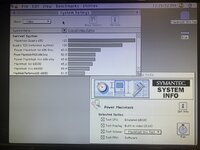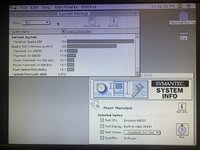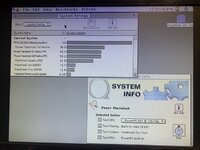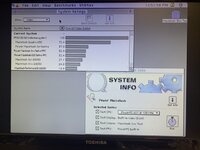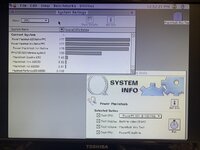I'm pretty sure this is not quite relevant to the orignal topic, but it sort of goes with the somewhat off-topic tangent about when and how one upgraded back then, and from what old Mac to what newer Mac, so here goes:
My first Macs were a tray loading iMac G3 bought new in early 1999, and both a slot loader and a clamshell iBook sometime in late summer or early fall of 1999 (there's a 10-20% chance we still have some form of sales receipt for all these somewhere). I then skipped the entirety of subsequent G3/G4/G5 based machines, and went the way to an Intel-based Mini in late 2006 and Core2 Duo MacBook (the spiritual successor to my iBook, which had fallen apart sometime in 2005) around March 2007.
So, I didn't know the bulk of the pre-iMac PPC era until actually quite recently; my first pre-G3 Mac was a PowerBase 200 bought from who I assume was the original owner in 2005, and then someone gave me a 7500 in 200...8? and someone else gave me a Sawtooth G4 in 2009 or early 2010. Then I found a Quicksilver in 2010 or 2010, and then this forum in 2012, which, combined with several other gifts over the years, has amassed a fairly representative collection spanning the first NuBus based Power Macs (6100 and 7100) to the Quad G5, and just about everything in between (notable exceptions include the 8100, 8500/9500 and 8600/9600, and the various Quadra 5xxx/6xxx models).
back before 2008 or so, every computer-related thing I had fit comforably in two places: in a dresser in my closet and in a pair of file cabinets in a 10x16 foot storage shed with lots of room to spare. Fast forward to now, I have so many (and many duplicates) it all barely fits in a 12x20 foot storage unit, with considerable overflow into a one-car garage, my desk, and THREE closets! This is a problem I suspect many others around here have, particularly those who began collecting before 2010 or so, when finding surplus machines for cheap was still relatively common.
Eventually, I need to downsize, because the lack of space (and the mounting costs of what space I do have), is becoming a problem....
We now return you to our regularly scheduled programming....
c
First used the Mac with the iMac? You missed all the fun! SCSI voodoo, System 6 system folders and dealing with Font/DA Mover, using a Mac with only a single floppy drive and no hard drive. I started my journey on a Mac Plus in 1990, with no hard drive!
On this topic of accelerators and such, I started at a very small business in 1997, and they didn’t even have a single computer in the building. I started as a shipper/receiver, and the entire wall was full of charts of rates you had to look up for each package being sent. You had to find the cheapest way to send something, and it often took 5+ minutes to figure that out.
I then got pushed into taking phone orders from customers, and having to find their card files in a literally 3x5 card file system of 10k customers. So inefficient!!
Within 3 months of starting there, from home I wrote HyperCard example programs for the shipping and customer card files and showed the owner. I showed him how a set of 5 computers would improve efficiency. He gave me a very limited budget to try, and the only thing I could make work inside that budget was a set of used Mac IIsi computers and LocalTalk networking. He was still unsure of this whole “computer” thing.
Within 6 months I had the entire company operating in HyperCard stacks, and while it was fast at the start, it began to slow down. LocalTalk and a 20mhz 68030 just wasn’t cutting it. So I convinced him to trust me and allow me to spend some money, and I was allowed to order Sonnet Presto 68040 40mhz upgrades, along with MacCon Ethernet cards for all of the IIsi machines, along with the newly-released iMac G3 to act as the server.
Those 68040 cards were the first time I had ever used an accelerator. They worked good, but it wasn’t as fast as a real full 68040 Mac. We used this setup until around 1999 or 2000 where I was allowed to upgrade all the Macs in the building to iMac G3 a lot load 500mhz models.
The computers and specially-written software allowed the business to grow from around $1mill/year in revenue to over $300mill/year today. Because the business grew so fast, the software has changed very little. We still use the exact same HyperCard customer database and invoicing system and shipping software that I wrote at home in 1997 in my spare time.
Using this DayStar Turbo 601 PowerPC card, I wonder if it would have been a better choice than the 68040 upgrade cards I bought the company in 1998. Also, I probably should have “splurged” and went for the IIci instead of the IIsi back then, but I was just a young kid and I literally was trying to go the cheapest route I could.
I imagine there are enough businesses that had invested in company infrastructure of Mac IIsi, IIci or the IIvx / Performa 600 machines and needed to upgrade their machines to faster ones, but maybe had bosses like mine and didn’t have a budget. So this Daystar card would have filled that need.
I don’t know how writing off computers in different countries was back then, but when I had a business you could only write off the depreciation of it each year, at maximum 25% per year of the remaining amount (so like 7-10 years of write-offs before it’s zero). A business that bought IIci machines in 1990 would have only written them down to zero by 1997 or later, and an upgrade for those customers is an ideal expense, because it likely could be written off 100% in year 1.
I cannot see any home user having bought a IIvx in 1993 having over $1200 USD to stick this upgrade card info their Mac. By 1995/96, it would have been far more efficient for them to trade their IIvx in for a 7100/80 used (if they needed NUBUS), or a 7200/75 new and sell their IIvx.
I think it’s a bit strange that this Daystar card specifically says that it’s ONLY for the IIvi/IIvx/P600 and yet I’ve tested it (updates above) in the IIci just find (thanks to Bolle for the confidence to try!). Daystar sold a specific SKU for the IIci only. I don’t understand that part.
If anyone wants some testing done with this card reach out to me. I plan to have it for a while before I let it go to someone else to play with. I’m not a fan/collector of accelerators.
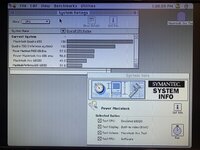 156CA24C-2E5D-477D-A61C-765BC9EC6F18.jpeg92.1 KB · Views: 24
156CA24C-2E5D-477D-A61C-765BC9EC6F18.jpeg92.1 KB · Views: 24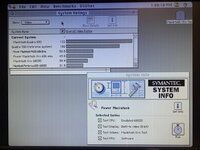 B48C547E-CA5F-4620-B6A2-940F52AC53A0.jpeg91 KB · Views: 19
B48C547E-CA5F-4620-B6A2-940F52AC53A0.jpeg91 KB · Views: 19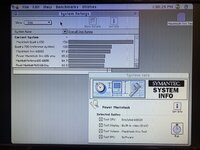 0AA8BF7B-82FE-428D-9E2C-D53E0097811F.jpeg91.5 KB · Views: 17
0AA8BF7B-82FE-428D-9E2C-D53E0097811F.jpeg91.5 KB · Views: 17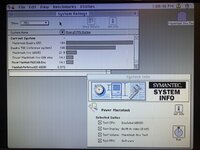 E531B26E-2D8F-42CF-B628-D67B8FE94960.jpeg93.3 KB · Views: 17
E531B26E-2D8F-42CF-B628-D67B8FE94960.jpeg93.3 KB · Views: 17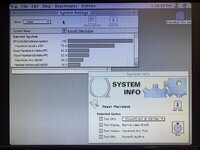 3FBEED40-F480-431D-A5D8-2FAFFE1FA9C3.jpeg88.6 KB · Views: 19
3FBEED40-F480-431D-A5D8-2FAFFE1FA9C3.jpeg88.6 KB · Views: 19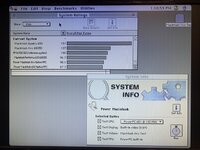 35EDB202-C08F-48F2-BA82-A010293DDA3E.jpeg86.6 KB · Views: 20
35EDB202-C08F-48F2-BA82-A010293DDA3E.jpeg86.6 KB · Views: 20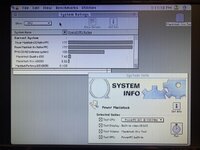 DB09C080-2D57-46DF-8A59-5BDC94D464E7.jpeg85.9 KB · Views: 20
DB09C080-2D57-46DF-8A59-5BDC94D464E7.jpeg85.9 KB · Views: 20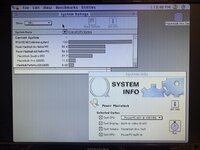 B74AE994-4770-4CF8-B7F6-35BFC58490AD.jpeg85.7 KB · Views: 29
B74AE994-4770-4CF8-B7F6-35BFC58490AD.jpeg85.7 KB · Views: 29
